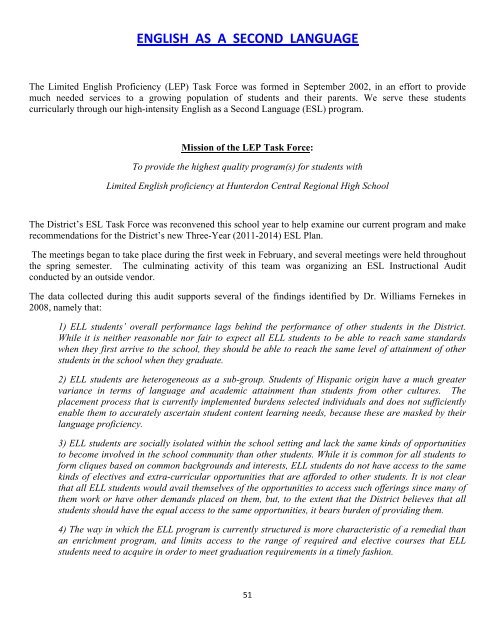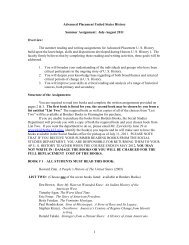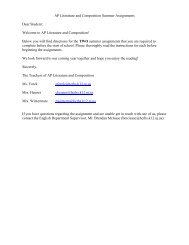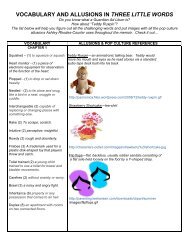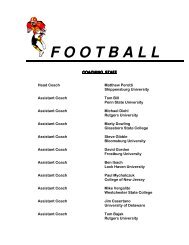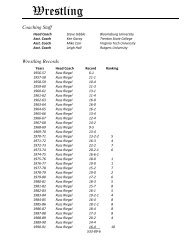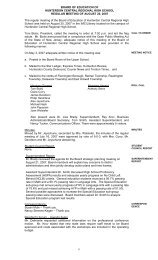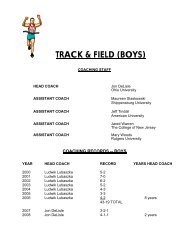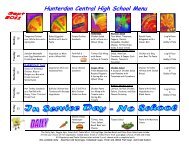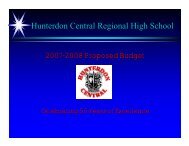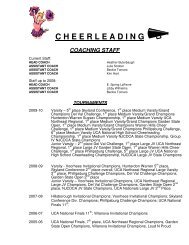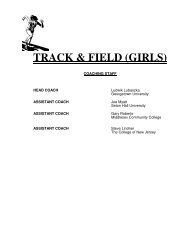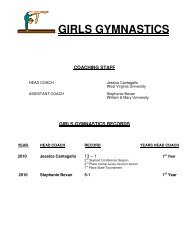HUNTERDON CENTRAL REGIONAL HIGH SCHOOL DISTRICT
HUNTERDON CENTRAL REGIONAL HIGH SCHOOL DISTRICT
HUNTERDON CENTRAL REGIONAL HIGH SCHOOL DISTRICT
You also want an ePaper? Increase the reach of your titles
YUMPU automatically turns print PDFs into web optimized ePapers that Google loves.
ENGLISH AS A SECOND LANGUAGE<br />
The Limited English Proficiency (LEP) Task Force was formed in September 2002, in an effort to provide<br />
much needed services to a growing population of students and their parents. We serve these students<br />
curricularly through our high-intensity English as a Second Language (ESL) program.<br />
Mission of the LEP Task Force:<br />
To provide the highest quality program(s) for students with<br />
Limited English proficiency at Hunterdon Central Regional High School<br />
The District’s ESL Task Force was reconvened this school year to help examine our current program and make<br />
recommendations for the District’s new Three-Year (2011-2014) ESL Plan.<br />
The meetings began to take place during the first week in February, and several meetings were held throughout<br />
the spring semester. The culminating activity of this team was organizing an ESL Instructional Audit<br />
conducted by an outside vendor.<br />
The data collected during this audit supports several of the findings identified by Dr. Williams Fernekes in<br />
2008, namely that:<br />
1) ELL students’ overall performance lags behind the performance of other students in the District.<br />
While it is neither reasonable nor fair to expect all ELL students to be able to reach same standards<br />
when they first arrive to the school, they should be able to reach the same level of attainment of other<br />
students in the school when they graduate.<br />
2) ELL students are heterogeneous as a sub-group. Students of Hispanic origin have a much greater<br />
variance in terms of language and academic attainment than students from other cultures. The<br />
placement process that is currently implemented burdens selected individuals and does not sufficiently<br />
enable them to accurately ascertain student content learning needs, because these are masked by their<br />
language proficiency.<br />
3) ELL students are socially isolated within the school setting and lack the same kinds of opportunities<br />
to become involved in the school community than other students. While it is common for all students to<br />
form cliques based on common backgrounds and interests, ELL students do not have access to the same<br />
kinds of electives and extra-curricular opportunities that are afforded to other students. It is not clear<br />
that all ELL students would avail themselves of the opportunities to access such offerings since many of<br />
them work or have other demands placed on them, but, to the extent that the District believes that all<br />
students should have the equal access to the same opportunities, it bears burden of providing them.<br />
4) The way in which the ELL program is currently structured is more characteristic of a remedial than<br />
an enrichment program, and limits access to the range of required and elective courses that ELL<br />
students need to acquire in order to meet graduation requirements in a timely fashion.<br />
51


